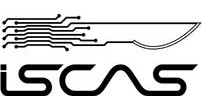
by Pascal Fallavollita
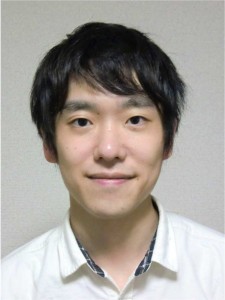 I’m Akihiro KOYAMA, second year master’s student at University of TOKYO. I’m majoring in bioengineering and my research field is radiation imaging. My work is development of high performance radiation detector for laparoscope. This challenge requires both improvement of detector and imaging algorithms. Especially gamma-ray detection techniques have much room for improvement.
I’m Akihiro KOYAMA, second year master’s student at University of TOKYO. I’m majoring in bioengineering and my research field is radiation imaging. My work is development of high performance radiation detector for laparoscope. This challenge requires both improvement of detector and imaging algorithms. Especially gamma-ray detection techniques have much room for improvement.
Although it seems difficult to balancing sensitivity and spatial resolution with small detector, I try solving this problem by combination use of Compton camera and optical tracking sensor. Radiation imaging has many relations to various research fields: electronics, medical science or information science. Collaboration research with other groups and industry workers are desirable.
However, for students including me, it is not so easy to make connection with various field researchers all over the world. CARS/ISCAS community seems very attractive place to make connection with other researchers and industry workers. Besides, job seeking researchers have easy to introduce own profile and career of research activity to industry. For example, joint sessions or discussions held by industry and academic groups will be effective to know each other. Conference will work as good opportunity for not only students but also industry workers to make connection for collaborative research or employment action.
I hope various research fields to be integrated to improve radiation imaging technology.
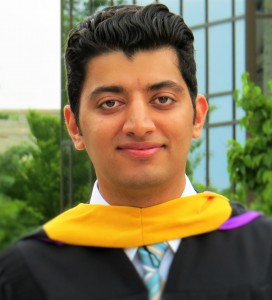 I, Azhar Hosein Faraz, have always been fascinated with the application of technology in medicine. To follow my interest, I pursued my education as a double degree in Electronics Engineering from AMU India and Honors specialization in Medical Biophysics from Western University, Canada. Presently, I am at the end of my Masters in Biomedical Engineering program under supervision of Dr. Terry M. Peters at Robarts Research Institute, Western University.
I, Azhar Hosein Faraz, have always been fascinated with the application of technology in medicine. To follow my interest, I pursued my education as a double degree in Electronics Engineering from AMU India and Honors specialization in Medical Biophysics from Western University, Canada. Presently, I am at the end of my Masters in Biomedical Engineering program under supervision of Dr. Terry M. Peters at Robarts Research Institute, Western University.
My research project focuses on the development of an automatic real-time intra operative bi-plane ultrasound calibration during in situ minimal invasive heart surgery. The proposed system enables, for the first time, to perform the calibration during surgery while the trans-apical surgical tool is introduced in the left ventricle of the heart and the ultrasound probe is inside the esophagous of the patient.
As a graduate research student, having more opportunity to share ideas with other junior/senior researchers, industrial scientists and clinicians can be highly beneficial for the further success of the projects. In this regard, having more emphasis on providing interactive research interest groups in the form of social events or social media as a research forum where academic and industrial researchers discuss projects and opportunities can be truly helpful.
This year I had the opportunity to present my work, follow new research areas and meet other experts in the CARS/ISCAS 2015. I thank the organizers, committee members and the community for providing such an amazing environment.
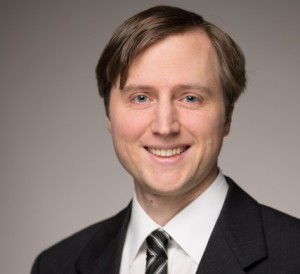 Alfred Michael Franz, the 2015 ISCAS Kikuchi Frugal Technology Award winner, finished his PhD thesis in summer 2015 and currently works as a Postdoc in the Junior Group Computer-assisted Interventions at the German Cancer Research Center (DKFZ, Heidelberg). His main research interest is image guided therapy, where he developed a new navigation concept for ultrasound-guided interventions that combines an electromagnetic field generator with an ultrasound probe to one single handheld device. The system integrates smoothly into clinical workflows and can be applied for different types of needle interventions, such as biopsies or radiofrequency ablations. It was recently used for patient treatment in a scientific context for the first time.
Alfred Michael Franz, the 2015 ISCAS Kikuchi Frugal Technology Award winner, finished his PhD thesis in summer 2015 and currently works as a Postdoc in the Junior Group Computer-assisted Interventions at the German Cancer Research Center (DKFZ, Heidelberg). His main research interest is image guided therapy, where he developed a new navigation concept for ultrasound-guided interventions that combines an electromagnetic field generator with an ultrasound probe to one single handheld device. The system integrates smoothly into clinical workflows and can be applied for different types of needle interventions, such as biopsies or radiofrequency ablations. It was recently used for patient treatment in a scientific context for the first time.
A major challenge during the research project was to bring the system to actual clinical use. After the first publication of the navigation concept in 2013 a huge amount of work was required to organize animal studies and to prepare the system for patient use. Reliable clinical partners were essential for these final steps. In this context, the CARS/ISCAS community can help networking with clinicians. As a positive example a fruitful clinical contact in this research project was established due to an International Journal of CARS publication.
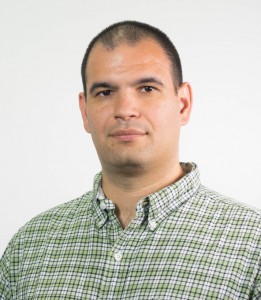 Tamas Ungi. I studied at the University of Szeged in Hungary, where I received MD and PhD degrees in 2006 and 2009. I was always interested in a research career, therefore, after my graduate studies I applied for a postdoctoral fellowship at the Laboratory for Percutaneous Surgery (Perk Lab) at Queen’s University, Kingston, ON, Canada, where I am still working as an adjunct assistant professor. I am working on ways to make medical interventions and surgeries less invasive by the use of intraoperative imaging and position tracking. I am part of a team led by Prof. Gabor Fichtinger that strives to provide open source algorithms and open access data to maximize reusability of our results.
Tamas Ungi. I studied at the University of Szeged in Hungary, where I received MD and PhD degrees in 2006 and 2009. I was always interested in a research career, therefore, after my graduate studies I applied for a postdoctoral fellowship at the Laboratory for Percutaneous Surgery (Perk Lab) at Queen’s University, Kingston, ON, Canada, where I am still working as an adjunct assistant professor. I am working on ways to make medical interventions and surgeries less invasive by the use of intraoperative imaging and position tracking. I am part of a team led by Prof. Gabor Fichtinger that strives to provide open source algorithms and open access data to maximize reusability of our results.
I think the biggest challenge for researchers in our field is to learn practical skills that lead to fast implementation of ideas. ISCAS plays an important role in disseminating knowledge by promoting personal interactions between researchers. In my experience this is much more efficient than traditional publications, which may become obsolete by the time they appear. I’m looking forward to more social events at ISCAS conferences, meeting new friends who make this career truly enjoyable.
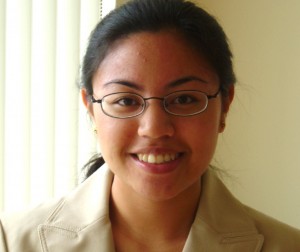 Sophia Shakur, M.D., was born in Calgary, Canada, and grew up in Salisbury, Maryland, USA. She completed her undergraduate studies in Molecular and Cellular Biology at Johns Hopkins University in Baltimore, Maryland, USA, and earned her medical degree from the Johns Hopkins University School of Medicine.
Sophia Shakur, M.D., was born in Calgary, Canada, and grew up in Salisbury, Maryland, USA. She completed her undergraduate studies in Molecular and Cellular Biology at Johns Hopkins University in Baltimore, Maryland, USA, and earned her medical degree from the Johns Hopkins University School of Medicine.
Currently, Dr. Shakur is completing her residency in neurosurgery at the University of Chicago in Chicago, Illinois, USA. She recently finished an enfolded neuroendovascular surgery fellowship at the University of Illinois at Chicago. Her clinical interests are in cerebrovascular and endovascular neurosurgery.
Dr. Shakur also remains active academically with more than 20 peer-reviewed publications in journals such as Stroke, Neurosurgery, and Journal of Neurosurgery. Her research interests include cerebral arteriovenous malformation hemodynamics and simulation training in neurosurgery.
She was awarded a 2015 ISCAS Student Scholarship for her work entitled “Usefulness of a virtual reality percutaneous trigeminal rhizotomy simulator in neurosurgical training.” Dr. Shakur gratefully acknowledges ISCAS for increasing the visibility of young investigators and showcasing their research at international conferences.
Pascal Fallavollita (topic editor), PhD is currently leading innovative research in computer assisted interventions, visualization and augmented reality at the Navigated Augmented Reality Visualization Systems (NARVIS) laboratory in the Technical University of Munich, Germany.

Leave a Reply